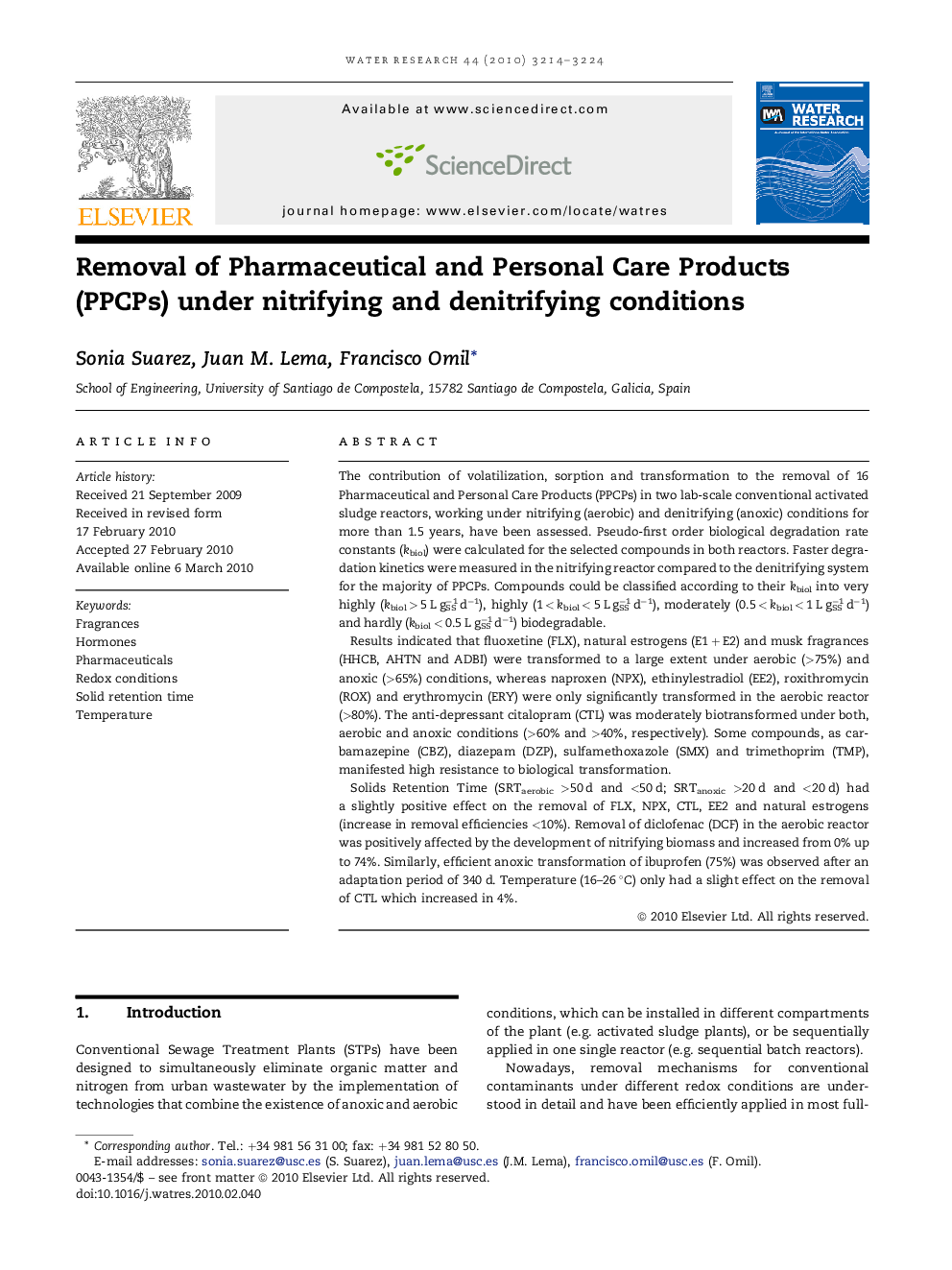| کد مقاله | کد نشریه | سال انتشار | مقاله انگلیسی | نسخه تمام متن |
|---|---|---|---|---|
| 4485092 | 1316940 | 2010 | 11 صفحه PDF | دانلود رایگان |

The contribution of volatilization, sorption and transformation to the removal of 16 Pharmaceutical and Personal Care Products (PPCPs) in two lab-scale conventional activated sludge reactors, working under nitrifying (aerobic) and denitrifying (anoxic) conditions for more than 1.5 years, have been assessed. Pseudo-first order biological degradation rate constants (kbiol) were calculated for the selected compounds in both reactors. Faster degradation kinetics were measured in the nitrifying reactor compared to the denitrifying system for the majority of PPCPs. Compounds could be classified according to their kbiol into very highly (kbiol > 5 L gSS−1 d−1), highly (1 < kbiol < 5 L gSS−1 d−1), moderately (0.5 < kbiol < 1 L gSS−1 d−1) and hardly (kbiol < 0.5 L gSS−1 d−1) biodegradable.Results indicated that fluoxetine (FLX), natural estrogens (E1 + E2) and musk fragrances (HHCB, AHTN and ADBI) were transformed to a large extent under aerobic (>75%) and anoxic (>65%) conditions, whereas naproxen (NPX), ethinylestradiol (EE2), roxithromycin (ROX) and erythromycin (ERY) were only significantly transformed in the aerobic reactor (>80%). The anti-depressant citalopram (CTL) was moderately biotransformed under both, aerobic and anoxic conditions (>60% and >40%, respectively). Some compounds, as carbamazepine (CBZ), diazepam (DZP), sulfamethoxazole (SMX) and trimethoprim (TMP), manifested high resistance to biological transformation.Solids Retention Time (SRTaerobic >50 d and <50 d; SRTanoxic >20 d and <20 d) had a slightly positive effect on the removal of FLX, NPX, CTL, EE2 and natural estrogens (increase in removal efficiencies <10%). Removal of diclofenac (DCF) in the aerobic reactor was positively affected by the development of nitrifying biomass and increased from 0% up to 74%. Similarly, efficient anoxic transformation of ibuprofen (75%) was observed after an adaptation period of 340 d. Temperature (16–26 °C) only had a slight effect on the removal of CTL which increased in 4%.
Journal: Water Research - Volume 44, Issue 10, May 2010, Pages 3214–3224